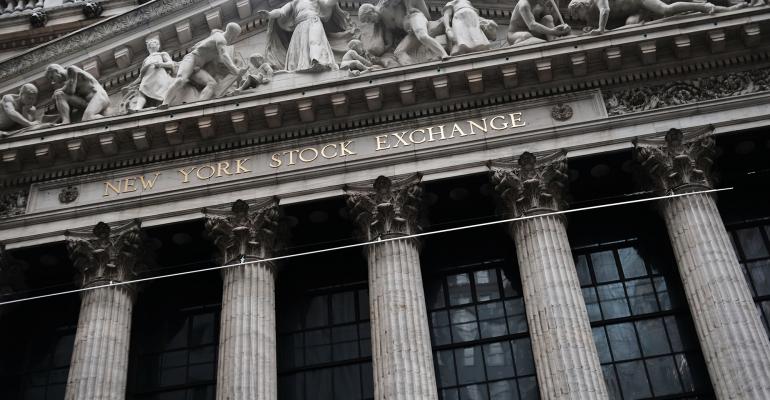(Bloomberg) -- There’s no stopping the SPAC, which emerged from obscurity to seemingly take over finance in 2020.
Special purpose acquisition companies, or SPACs, went from a back-of-the-shelf financial vehicle to one of the biggest segments of initial public offerings, with a record $78 billion raised in the U.S. this year, according to data compiled by Bloomberg. That exceeded the combined total of SPACs in all previous years and made up about 45% of this year’s record $177 billion IPO volume, the data show.
Blank-check companies, as SPACs are also known, will continue to shake up not only equity markets but also mergers and acquisitions in 2021, dealmakers predict. Still, the flood of SPACs searching for acquisition targets -- plus the new ones being raised every day trying to woo investors -- could create a challenging dynamic.
“I still think it’s going to be a very, very robust market in 2021,” said Niron Stabinsky, Credit Suisse Group AG’s head of SPACs. “ECM volumes are incredible, which is a function in part of the strong performance of the equity markets in general. At some point it is inevitable that things will cool down and you will see volume slow.”
Credit Suisse alone is preparing to launch seven to eight new SPACs in January, he added.
Credit Suisse was the No. 1 SPAC underwriter, followed closely by Citigroup Inc., while Goldman Sachs Group Inc. was the top adviser on mergers involving SPACs, according to data compiled by Bloomberg.
The unprecedented surge in SPACs was fueled in part by a hunt for alternative investments that was spurred by the coronavirus pandemic. It also sprung from a renewed debate over whether the traditional IPO process left money on the table for companies going public. Direct listings had emerged as one way to address that concern, but SPACs became the resounding answer in 2020.
Financing Competition
In addition to providing an alternative route to public markets for companies seeking to avoid the risk and uncertainty of an IPO, SPACs also compete with late-stage private capital.
“The SPAC is bringing the last round of financing forward to the same time as the IPO,” said Olympia McNerney, Goldman Sachs’ head of U.S. SPACs. “Companies are effectively doing the last round and the IPO all in one go.”
With more than 200 SPACs looking for acquisitions, dealmakers predict that will lead to $300 billion worth of merger volume, Goldman Sachs strategists have said.
In a blank-check merger, companies can pitch to investors based on their forward-looking financials, which isn’t allowed in a traditional IPO. That benefits younger companies, such as electric vehicle makers, which don’t yet have a proven business model. Coupled with the attractiveness of having permanent capital -- publicly traded equity -- the advantages have made SPACs a popular tool as the pandemic prompted companies to plan ahead for liquidity.
Despite their perks, SPACs have been criticized for giving away too much equity to their managers -- the founders -- who collect fees as an incentive to find a target and complete a deal.
Read more: A QuickTake explains how SPACs work as blank-check companies
New Structures
To combat the concerns, founders and their advisers are using innovative structures to allay investor concerns.
“There is evolution in the product with some sponsors putting their promote in an earn-out up-front,” Goldman’s McNerney said. “We also are seeing this at the time of the business combination, where the promote can be put into an earn-out to show alignment with the seller and investors.”
Bill Ackman, the billionaire hedge fund manager, raised the biggest SPAC on record -- $4 billion -- in July. In place of the usual 20% of the SPAC’s holdings, known as the founders’ share, he gets warrants in the merged entity that kick in when the stock price rises. Evercore Inc. came up with another structure that it trademarked in which such fees, also known as promotes, are delayed and issued based on performance.
While still lucrative, SPACs are increasingly in competition with each other, with more than 200 outstanding vehicles looking for transactions within a tight timeframe -- usually 18 to 24 months, Bloomberg data show. On top of offering more attractive terms and valuations, some sponsors are putting their own returns on the negotiating table to win deals, including offering to forgo part of the payout or delaying it, dealmakers said.
“In general, the better the quality of the sponsor team, the less promote they’ll have to forfeit,” said Eric Gomberg, head of SPAC banking at boutique firm Odeon Capital. “Valuation isn’t the target’s only consideration, but also what the SPAC sponsor team brings to the table.”
Interest Rates
The continued popularity of SPACs rests not just on deal structures, but also on whether interest rates remain near zero, keeping investors on the hunt for yield.
Investors see SPACs as low risk with the potential of big upside. They are able to recoup their investment if they don’t like the acquisition, while still keeping the warrants for shares that typically come with SPACs if the stocks trade up.
“Right now there is very little opportunity cost to putting your capital into SPACs, and the value of the fractional warrant is attractive relative to bond yields,” said Paul Abrahimzadeh, Citi’s co-head of equity capital markets for North America.
“SPAC volumes will be as active in 2021 as they have been this year, if not more,” he said. “If rates stay where they are.”





